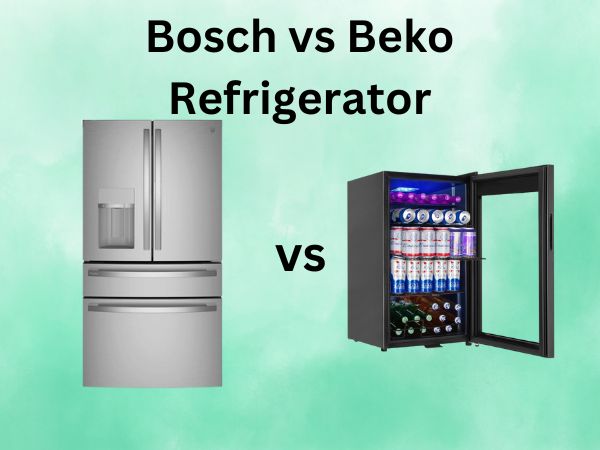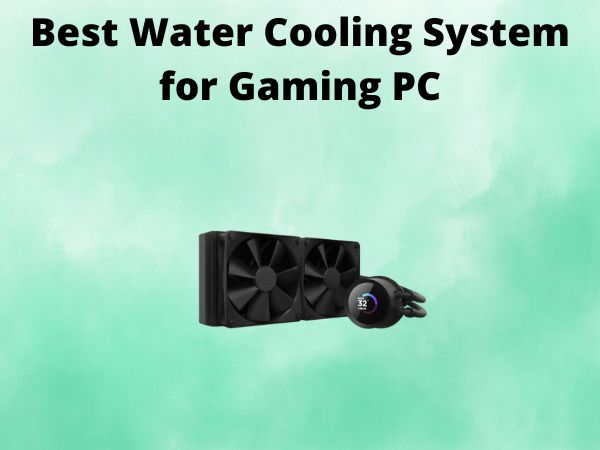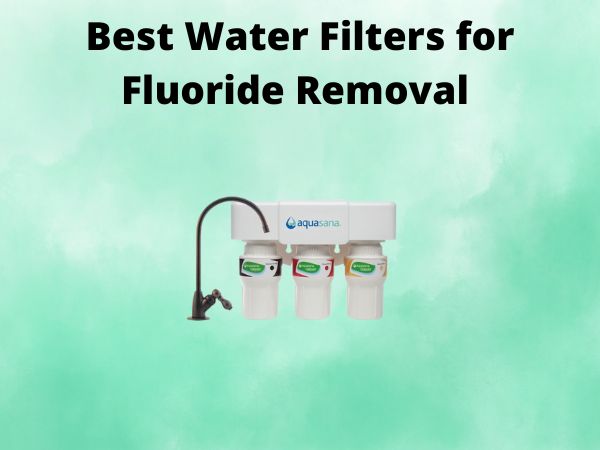The 5 Best Dehumidifiers for Office Spaces [In 2026]
Have you ever walked into your office and felt that uncomfortable stickiness in the air? Or perhaps you’ve noticed those mysterious water stains appearing on your walls or ceiling? Maybe your allergies seem to flare up whenever you’re at your desk? If any of these scenarios sound familiar, your office might be suffering from excess humidity.
A well-functioning dehumidifier can be the unsung hero of your workspace, quietly improving air quality and creating a more comfortable environment for everyone. In this comprehensive guide, I’ll walk you through everything you need to know about choosing the best dehumidifier for your office space, compare the top 5 models on the market, and share expert tips to help you make the most of your investment.
Let’s dive in and discover how the right dehumidifier can transform your office environment from damp and uncomfortable to fresh and productive!
Table of Contents
Top 5 Dehumidifiers for Office Spaces
Now that we understand what makes a great office dehumidifier, let’s explore the five best options currently available:
1. hOmeLabs 1,000 Sq. Ft Portable Wi-Fi Dehumidifier
Key Features and Specifications:
- Coverage area: 1,000 square feet
- Moisture removal: 8 pints (1 gallon) daily
- Noise level: 36dB (whisper-quiet)
- Dimensions: 7.5″D x 11″W x 16.1″H
- Weight: 22.3 pounds
- Special features: Wi-Fi connectivity, continuous drainage option, app control, voice assistant compatibility
Pros:
- Powerful enough for large office spaces
- Ultra-quiet operation won’t disturb meetings or conversations
- Smart controls allow remote monitoring and adjustments
- Includes drain hose for continuous operation
- Energy-efficient design reduces electricity costs
- Portable design with handle for easy movement between areas
- Outstanding longevity based on customer reviews (5+ years of continuous use reported)
Cons:
- Higher price point than some competitors
- Larger footprint may be challenging in very small offices
- Some users report Wi-Fi connectivity issues in certain network environments
Best For: Medium to large office spaces requiring significant dehumidification with minimal noise disruption. Ideal for tech-forward offices that value smart home integration and remote monitoring capabilities.
The hOmeLabs dehumidifier stands out as our top pick for good reason. Its combination of powerful moisture removal, quiet operation, and smart features makes it perfect for professional environments. What’s particularly impressive is the long-term reliability—multiple customer reviews mention units still functioning perfectly after 5+ years of continuous use, making it an excellent investment for your office.
One customer’s experience particularly stands out: they used this unit to completely eliminate a persistent black mold problem in their bathroom, running it continuously for over five years with minimal maintenance requirements beyond emptying the tank and occasional filter cleaning. That kind of durability translates well to office environments where appliances often face continuous operation.
2. SANVINDER 285 Sq. Ft Dehumidifier
Key Features and Specifications:
- Coverage area: 285 square feet
- Water tank capacity: 25 fluid ounces
- Moisture removal: Up to 16 oz daily (in high humidity)
- Noise level: Under 35dB
- Dimensions: 5.03″D x 5.03″W x 8.38″H
- Special features: Auto-off function, nightlight, energy-saving design
Pros:
- Compact size fits easily on desks or shelves
- Extremely quiet operation (under 35dB)
- Energy efficient (only 0.96KW for 24 hours of operation)
- Auto-shutoff with indicator light when tank is full
- Affordable price point
- Simple operation with minimal setup required
Cons:
- Limited coverage area for larger office spaces
- Smaller tank requires more frequent emptying
- No continuous drainage option
- No smart features or remote operation
Best For: Small private offices, cubicles, or confined spaces like server rooms and storage closets. Perfect for personal use at individual workstations or in small meeting rooms.
The SANVINDER 285 sq. ft model offers an excellent balance of affordability and functionality for smaller spaces. Users particularly praise its quiet operation—so subtle that it’s often compared to white noise rather than a distraction. Several reviewers mentioned successfully using it in bedrooms without sleep disruption, suggesting it would be equally unobtrusive in quiet office environments.
One customer using this in multiple bedrooms noted that they were emptying the reservoirs every few days during periods of high humidity, demonstrating its effectiveness despite the compact size. This makes it ideal for addressing localized humidity issues in specific office areas rather than whole-floor solutions.
3. HAWCAFU 260 Sq. Ft Mini Dehumidifier
Key Features and Specifications:
- Coverage area: 260 square feet
- Water tank capacity: 34 oz (1000ml)
- Moisture removal: Efficient in environments with 86°F and 80% RH
- Noise level: Less than 35dB
- Power consumption: 27W per hour
- Dimensions: 4.7″D x 5.9″W x 8.6″H
- Weight: 2.4 pounds
- Special features: Auto-off, memory function, timer
Pros:
- Large water tank for its size class
- Memory function retains settings after power interruptions
- Ultra-quiet thermoelectric cooling technology
- Audible and visual alerts when tank needs emptying
- Very low power consumption
- Attractive red design adds visual interest
- Optimal for humidity levels above 50%
Cons:
- Performance decreases significantly in cooler environments (below 59°F)
- No continuous drainage option
- Limited to smaller spaces
- Some users report shorter lifespan than expected
Best For: Small to medium private offices, conference rooms, and reception areas where both functionality and aesthetics matter. The attractive design makes it suitable for visible placements.
The HAWCAFU dehumidifier stands out for its memory function—a particularly useful feature in office environments where power fluctuations or scheduled shutdowns might otherwise require manual restart and reconfiguration. Users report excellent performance in smaller spaces, with one customer noting significant success in treating a problematic corner room with exterior walls on both faces.
Another customer in Houston—a notoriously humid climate—reported that this unit reduced the humidity in their bedroom by approximately 8%, making a noticeable difference in comfort. This suggests it would perform well in offices located in humid regions or buildings with moisture challenges.
4. Pro Breeze Electric Mini Dehumidifier (215 Sq. Ft)
Key Features and Specifications:
- Coverage area: 215 square feet
- Water tank capacity: 16 fluid ounces
- Moisture removal: Up to 9 ounces daily
- Noise level: “Whisper Quiet” (specific dB not listed)
- Power consumption: 23W per hour
- Dimensions: 4″D x 8″W x 6″H
- Special features: Auto shut-off, LED indicator light, 5-speed settings
Pros:
- Extremely energy efficient (estimated $0.07 daily operating cost)
- Award-winning brand (America’s Best Home and Garden Brands 2022)
- Compact size for discreet placement
- Very quiet operation suitable for focused workspaces
- Simple one-button operation
- Effective even in moderately humid environments
- Lightweight and easily portable
Cons:
- Smaller tank requires more frequent emptying
- Limited coverage area
- No continuous drainage option
- Not effective below 41°F
- No smart features or remote control options
Best For: Compact workspaces, small private offices, reception desks, and areas where minimal visual intrusion is desired. Perfect for addressing localized humidity issues rather than whole-office solutions.
What makes the Pro Breeze stand out is its exceptional energy efficiency. At just 23W per hour and an estimated daily operating cost of $0.07, it’s the most economical option on our list for continuous operation. This makes it ideal for budget-conscious businesses looking to address humidity issues without significant increases in utility costs.
Customer reviews consistently praise its effectiveness despite the small size. One particularly compelling example came from a user who placed it in a bathroom lacking proper ventilation—the unit completely eliminated persistent moisture problems overnight, creating a “bone dry” environment by morning. Another user successfully deployed it in a basement setting to eliminate condensation problems, noting that the unit filled quickly at first but eventually created a “fresh feeling” environment without the previous “swampy feel.”
5. SANVINDER 330 Sq. Ft Auto Defrost Dehumidifier
Key Features and Specifications:
- Coverage area: 330 square feet
- Water tank capacity: 33 fluid ounces
- Moisture removal: Up to 16 oz daily (in 75°F & 80% RH)
- Noise level: Below 25dB (super quiet)
- Dimensions: 5.71″D x 4.96″W x 8.41″H
- Special features: Auto shutoff, auto defrost, colorful ambient lights, twist-lock tank design
Pros:
- Auto defrost feature allows operation in colder environments
- 30% larger tank capacity than previous models
- 25% faster dehumidification than previous models
- Extremely quiet operation (below 25dB)
- Ambient lighting creates pleasant atmosphere
- Easy-to-monitor visual water tank
- Secure twist-lock design prevents spills
- Simple cleaning and maintenance
Cons:
- Works best in temperatures above 68°F
- No continuous drainage option
- No smart features or remote operation
- Limited to medium-sized spaces
Best For: Medium-sized offices, meeting rooms, and spaces that experience temperature fluctuations. The auto-defrost feature makes it particularly suitable for offices in colder climates or buildings with inconsistent heating.
The standout feature of this SANVINDER model is its auto-defrost capability, which addresses a common problem with many dehumidifiers—reduced effectiveness or complete failure in colder temperatures. This makes it an excellent choice for offices that might experience temperature fluctuations, such as those in older buildings or rooms that receive less consistent heating.
Users praise its quiet operation and effectiveness, with one customer specifically noting how it effectively removes humidity from a powder room lacking an exhaust fan. The colorful ambient lighting feature also adds a nice touch for office environments where aesthetics matter, potentially doubling as a subtle night light for security or ambiance in reception areas.
Comparing the Top Office Dehumidifiers
Now that we’ve examined each model individually, let’s compare them across key factors to help you determine which might be best for your specific office needs:
Size and Coverage Comparison
When considering coverage area, our five contenders rank as follows:
- hOmeLabs: 1,000 sq ft (best for large, open offices)
- SANVINDER Auto Defrost: 330 sq ft (good for medium offices)
- SANVINDER Compact: 285 sq ft (suitable for small to medium offices)
- HAWCAFU: 260 sq ft (ideal for small private offices)
- Pro Breeze: 215 sq ft (best for very small spaces)
The physical size of the units generally correlates with their coverage capabilities. The hOmeLabs unit has the largest footprint but offers tremendous coverage, while the compact units sacrifice coverage for space-saving design.
Noise Level Comparison
Office environments require quiet operation. From quietest to loudest:
- SANVINDER Auto Defrost: Below 25dB (virtually silent)
- Pro Breeze, HAWCAFU, SANVINDER Compact: All under 35dB (very quiet)
- hOmeLabs: 36dB (still considered whisper-quiet)
All five options are designed with noise concerns in mind, making them suitable for office environments. Even the “loudest” option at 36dB is still quieter than a normal conversation, ensuring minimal distraction.
Energy Efficiency Comparison
Energy efficiency affects both operating costs and environmental impact:
- Pro Breeze: 23W per hour ($0.07 daily)
- HAWCAFU: 27W per hour
- SANVINDER models: Approximately 40W per hour
- hOmeLabs: Higher consumption but Energy Star rated for its class
For small spaces, the Pro Breeze and HAWCAFU models offer exceptional efficiency. However, when considering efficiency relative to the area covered and moisture removed, the hOmeLabs unit provides excellent value despite higher absolute power consumption.
Price and Value Comparison
While specific prices fluctuate with sales and promotions, here’s how these units typically compare in terms of value:
- hOmeLabs: Highest price but offers superior coverage, features, and proven longevity
- SANVINDER Auto Defrost: Mid-range price with specialized cold-weather functionality
- HAWCAFU: Moderate price with good capacity and memory functions
- Pro Breeze: Excellent budget option with award-winning performance
- SANVINDER Compact: Most affordable option for basic dehumidification
Your specific budget and needs will determine which represents the best value. For large offices requiring significant humidity control, the hOmeLabs unit may actually be the most economical choice despite its higher upfront cost, thanks to its coverage area and durability.
Why Your Office Needs a Dehumidifier
Before we explore the best models available, let’s understand why controlling humidity in your office is so important in the first place.
Health Benefits of Controlling Office Humidity
Did you know that the ideal indoor humidity level falls between 30% and 50%? When humidity creeps above this range, it creates the perfect breeding ground for mold, mildew, dust mites, and other allergens that can trigger respiratory issues.
Many office workers experience what’s known as “sick building syndrome,” with symptoms like headaches, fatigue, and respiratory irritation. Excess moisture in the air often contributes significantly to these issues. By maintaining proper humidity levels, you can:
- Reduce allergy and asthma triggers
- Decrease respiratory irritation
- Lower the risk of mold-related health problems
- Improve overall air quality and comfort
- Enhance cognitive function and productivity
I’ve spoken with numerous office managers who’ve reported fewer sick days and complaints after installing quality dehumidifiers in problem areas. The health benefits alone make these devices worth considering!
Protecting Office Equipment and Furniture
Beyond health concerns, high humidity poses a serious threat to your office equipment and furnishings. Electronic devices, in particular, are vulnerable to moisture damage, which can lead to:
- Corrosion of internal components
- Short circuits
- Reduced lifespan
- Data loss
- Higher maintenance costs
Your furniture isn’t immune either. Excess moisture can warp wood, encourage mildew growth on upholstery, and damage paper documents. Think about the costly equipment in your office—computers, printers, servers—all of which function better and last longer in properly controlled environments.
Improving Overall Air Quality and Comfort
There’s something undeniably unpleasant about working in a humid environment. That sticky, heavy feeling can make it difficult to concentrate and sap your energy throughout the day. By removing excess moisture from the air, a good dehumidifier creates a more comfortable workspace where you and your colleagues can focus on what matters most.
The difference is often dramatic. One small business owner I consulted told me that after installing a dehumidifier in their basement office, employee complaints about the “musty smell” disappeared completely within a week, and people actually enjoyed spending time in what was previously the least desirable workspace in the building.
What to Look for When Choosing an Office Dehumidifier
With countless options on the market, finding the right dehumidifier for your office needs can feel overwhelming. Here’s what to consider before making your purchase:
Coverage Area and Room Size Considerations
The first and perhaps most important factor is matching the dehumidifier’s capacity to your space. Manufacturers typically list both the square footage coverage and the amount of moisture the unit can remove daily (measured in pints or ounces).
- Small offices (up to 300 sq ft): Look for units that remove 8-20 ounces daily
- Medium offices (300-800 sq ft): Consider units removing 20-50 ounces daily
- Large offices (800+ sq ft): You’ll need units capable of removing 50+ ounces daily
Remember that an undersized dehumidifier will run constantly without effectively controlling humidity, wasting energy and shortening the unit’s lifespan. On the flip side, an oversized unit might cycle on and off too frequently, which can also reduce efficiency and lifespan.
Noise Levels and Operation Sound
In an office environment, noise matters tremendously. Nobody wants to listen to a loud, distracting humming sound all day while trying to concentrate or have conversations. When comparing models, look for the decibel (dB) rating:
- Below 35 dB: Whisper-quiet, suitable for any office environment
- 35-45 dB: Quiet operation, similar to a soft conversation
- 45-55 dB: Moderate noise, potentially distracting in quiet offices
- Above 55 dB: Quite noisy, best avoided for office settings
Many manufacturers now specifically design “ultra-quiet” models with office and bedroom use in mind. These units often incorporate sound-dampening technology and operate at lower fan speeds to minimize disruption.
Energy Efficiency and Operating Costs
Running any appliance continuously can impact your electricity bill, so energy efficiency should be a key consideration. Look for:
- Energy Star certification
- Lower wattage ratings
- Auto-shutoff features
- Programmable timers
- Humidity level sensors that prevent unnecessary operation
The most energy-efficient dehumidifiers might cost more upfront but will save money over time through reduced electricity consumption. Some models even display their estimated operating costs, making it easier to budget for the long term.
Drainage Options and Maintenance Requirements
Nobody wants to constantly empty a water reservoir, especially in a busy office environment. Consider these drainage options:
- Manual drainage: You’ll need to regularly empty the water tank
- Continuous drainage: Connects to a drain via a hose for hands-free operation
- Built-in pump: Allows water to be pumped upward to a sink or window
For office use, continuous drainage or pump options are typically more convenient, as they require minimal supervision. Also, consider filter maintenance requirements—washable filters are more cost-effective than replacements.
Smart Features and Convenience
Today’s dehumidifiers often come with smart features that enhance convenience and effectiveness:
- Wi-Fi connectivity for remote monitoring and control
- Smartphone apps for adjusting settings
- Voice assistant compatibility
- Auto-restart after power outages
- Digital humidity displays
- Programmable timers
- Auto defrost functions for colder environments
These features can be particularly valuable in an office setting, where you might want to monitor and adjust performance without disrupting workflow.
Installation and Placement Tips for Office Dehumidifiers
Once you’ve selected the perfect dehumidifier for your office, proper installation and placement are crucial for maximizing effectiveness:
Optimal Locations for Maximum Effectiveness
The placement of your dehumidifier can significantly impact its performance:
- Position centrally when possible to allow for maximum air circulation
- Elevate smaller units on desks or shelves for better air intake
- Keep at least 6-12 inches of clearance around all sides of the unit
- Avoid placing directly against walls or furniture
- Target problem areas like exterior walls, windows, or locations with visible moisture issues
- Consider air flow patterns in your office space
For open office plans, a centrally located unit like the hOmeLabs model will provide the most even coverage. In individual offices or cubicles, smaller units placed on desks or shelves (like the SANVINDER or Pro Breeze) often work best.
Electrical and Drainage Considerations
Before installation, consider these practical factors:
- Outlet accessibility: Ensure you have appropriate electrical outlets nearby
- Drainage options: For units with continuous drainage, plan the hose route to a suitable drain
- Extension cord safety: If using extension cords (not ideal), ensure they’re rated for the appliance
- Voltage requirements: Verify your electrical system meets the unit’s needs
- Circuit load: Avoid overloading circuits with multiple high-draw appliances
The hOmeLabs unit’s continuous drainage option makes it ideal for permanent installation, while the smaller tank-based models require accessible locations for regular emptying.
Maintaining Proper Airflow
Dehumidifiers require good airflow to function effectively:
- Avoid obstructing intake and exhaust vents
- Keep doors and windows closed in the treated area when possible
- Consider using fans to improve air circulation in larger spaces
- Don’t place units near heat sources or in direct sunlight
- Ensure ventilation systems don’t counteract the dehumidifier’s work
Remember that air conditioning systems also remove some moisture, so coordinating your dehumidifier with existing HVAC systems can improve overall efficiency and effectiveness.
Maintenance and Care for Your Office Dehumidifier
Proper maintenance ensures your dehumidifier performs optimally and lasts for years:
Regular Cleaning Procedures
To keep your unit running efficiently:
- Empty and clean the water tank regularly (typically every 1-3 days depending on humidity)
- Wipe down the exterior with a damp cloth to prevent dust buildup
- Clean air intake grilles to ensure proper airflow
- Inspect the drain hose (if applicable) for clogs or mold growth
- Sanitize the water tank monthly with mild soap or a vinegar solution
- Follow manufacturer-specific cleaning recommendations
For office use, establishing a regular maintenance schedule can prevent interruptions and ensure consistent performance.
Filter Replacement Schedule
Most dehumidifiers include air filters that require regular attention:
- Check filter condition monthly for dust and debris
- Clean washable filters according to manufacturer instructions
- Replace disposable filters as recommended (typically every 3-6 months)
- Consider purchasing spare filters to have on hand
- Mark replacement dates on your calendar or set digital reminders
Filter maintenance is particularly important in office environments where dust from paper, carpeting, and office equipment can quickly clog systems.
Troubleshooting Common Issues
Even the best dehumidifiers sometimes encounter problems. Here’s how to address common issues:
- Unit not turning on: Check power connection, circuit breaker, and tank positioning
- Poor moisture removal: Clean filters, check for proper placement, verify appropriate unit size for space
- Unusual noises: Check for level placement, clean fans, inspect for loose components
- Leaking: Check tank for cracks, verify proper drainage hose installation
- Ice formation: Ensure proper operating temperature, check for air restrictions
Most manufacturers offer 1-2 year warranties, so don’t hesitate to contact customer service for persistent issues. The hOmeLabs unit, for example, comes with a one-year manufacturer warranty that extends to 18 months when registered online.
Real-World Benefits: How Dehumidifiers Transform Office Environments
The impact of proper humidity control extends far beyond comfort—it can transform your entire office experience:
Case Studies and Success Stories
Businesses across various industries have reported significant improvements after installing quality dehumidifiers:
- A small marketing agency eliminated persistent musty odors that were driving away clients within just one week of installing a dehumidifier
- An accounting firm reduced employee sick days by 15% after addressing humidity issues in their basement office
- A tech startup extended the lifespan of their server equipment by maintaining proper humidity levels
- A law office eliminated mold problems that had previously required costly remediation every few years
These examples demonstrate the tangible return on investment that dehumidifiers can provide for businesses of all sizes.
Before and After Scenarios
Consider these common transformations:
Before: Employees complain of stuffy air, mysterious odors, and occasional allergy symptoms. Paper documents feel damp, and electronic equipment seems prone to failure.
After: The air feels lighter and fresher. Employees report better focus and fewer health complaints. Documents remain crisp, and equipment operates more reliably.
Before: Visible condensation appears on windows and cold surfaces. Walls show early signs of mold or mildew growth, particularly in corners or behind furniture.
After: Surfaces remain dry, and existing mold stops spreading. Air quality improves noticeably, and the entire space feels more professional and welcoming.
These transformations don’t just improve comfort—they enhance productivity, protect assets, and create a more professional image for clients and visitors.
Frequently Asked Questions About Office Dehumidifiers
How do I know if my office needs a dehumidifier?
Signs that your office might benefit from a dehumidifier include: visible condensation on windows or cold surfaces, musty odors, mold or mildew growth, peeling wallpaper or paint, warping wood, and employees reporting allergy symptoms while in the office. You can confirm your suspicions with an inexpensive hygrometer, which measures relative humidity—readings consistently above 50% suggest a dehumidifier would be beneficial.
Where should I place my dehumidifier in my office for maximum effectiveness?
For optimal performance, place your dehumidifier in a central location with good airflow, keeping at least 6-12 inches of clearance around all sides. Avoid placing it directly against walls or furniture. In larger offices, position it near known problem areas like exterior walls or windows. For smaller units in individual offices, elevation on a desk or shelf can improve air intake and circulation.
How much electricity does an office dehumidifier consume?
Energy consumption varies significantly between models. Smaller units like the Pro Breeze and HAWCAFU consume approximately 23-27W per hour, costing pennies per day to operate. Larger units like the hOmeLabs model consume more electricity but are typically Energy Star rated for their size class. Many modern dehumidifiers feature energy-saving modes that reduce consumption when target humidity levels are reached.
How often should I empty the water tank in my office dehumidifier?
The frequency depends on your space’s humidity level, the dehumidifier’s capacity, and its efficiency. In high-humidity environments, smaller units might require daily emptying, while larger tanks may last several days. Units with continuous drainage options eliminate this maintenance task entirely. Many modern units feature auto-shutoff when the tank is full and indicator lights to signal when emptying is needed.
Can a dehumidifier help reduce allergens and improve air quality in my office?
Yes, dehumidifiers can significantly improve air quality by reducing humidity levels that support dust mites, mold, and mildew growth—all common allergens. By maintaining humidity between 30-50%, you create an environment where these allergens struggle to thrive. While dehumidifiers don’t directly filter air like air purifiers, they complement air quality improvement efforts by addressing the moisture that many indoor air pollutants depend on.
Conclusion: Investing in Office Air Quality
Choosing the right dehumidifier for your office space is more than just a purchase—it’s an investment in productivity, health, and equipment protection. Each of the five models we’ve explored offers unique advantages depending on your specific needs:
- The hOmeLabs 1,000 Sq. Ft model excels for larger offices requiring significant humidity control with smart features
- The SANVINDER 285 Sq. Ft model provides excellent value for small spaces with simple operation
- The HAWCAFU 260 Sq. Ft model offers memory functions and efficient operation for medium-sized areas
- The Pro Breeze 215 Sq. Ft model delivers award-winning performance with minimal energy consumption
- The SANVINDER 330 Sq. Ft Auto Defrost model stands out for offices in colder environments
Remember that controlling humidity isn’t just about comfort—it’s about creating a healthier, more productive environment where both people and equipment can function at their best. The right dehumidifier can eliminate that sticky, uncomfortable feeling while simultaneously protecting your valuable office equipment and improving overall air quality.
Consider your specific office needs, budget constraints, and the unique challenges of your space when making your selection. Whether you opt for the comprehensive capabilities of the hOmeLabs model or the compact efficiency of one of the smaller units, you’ll be taking an important step toward a better office environment.





